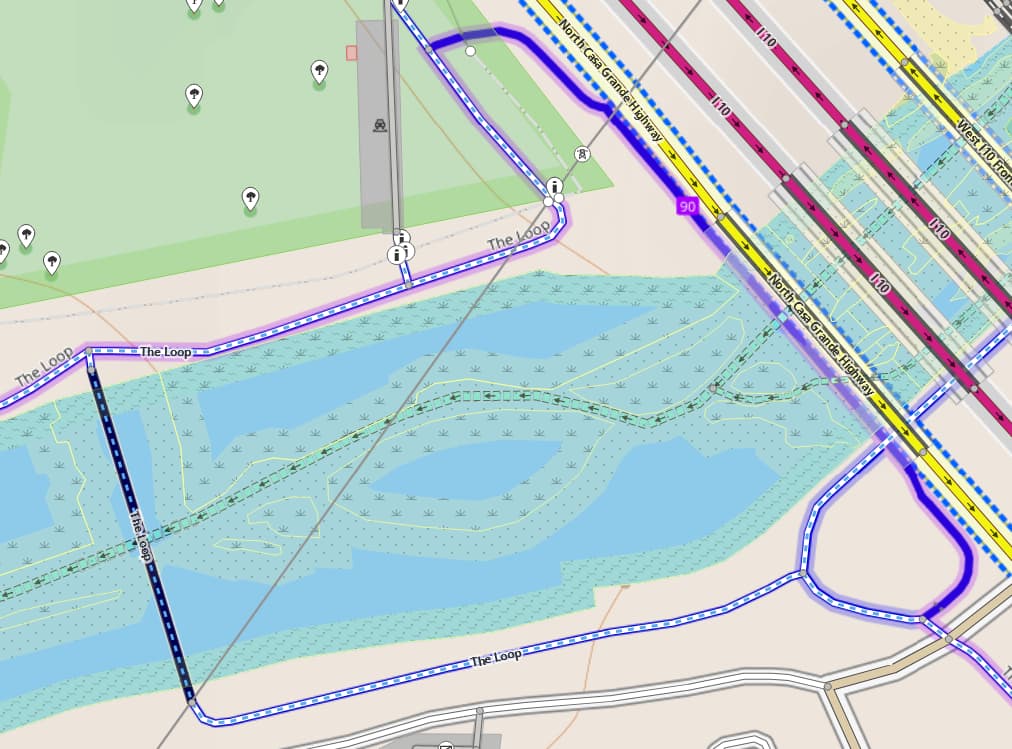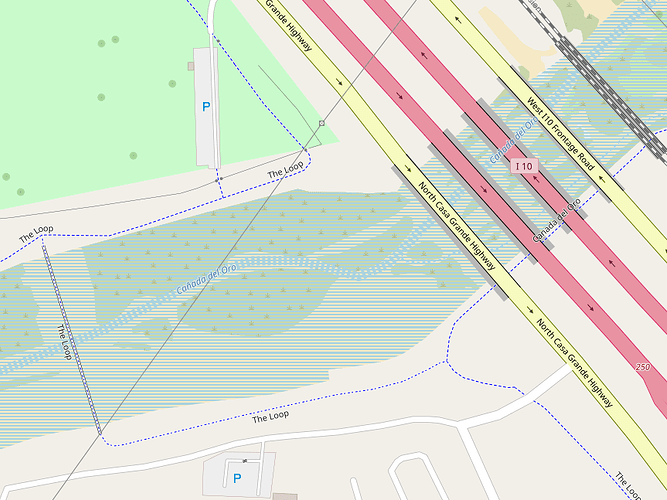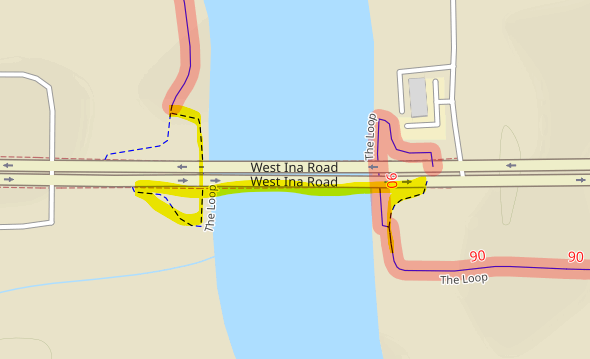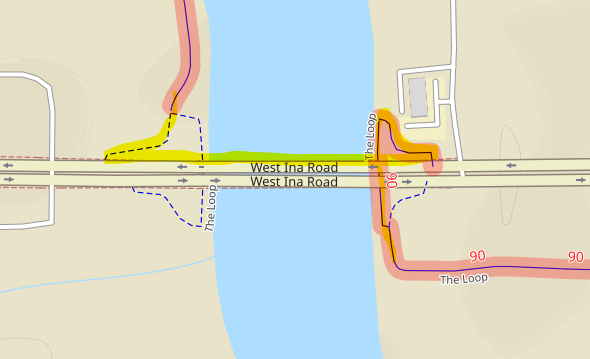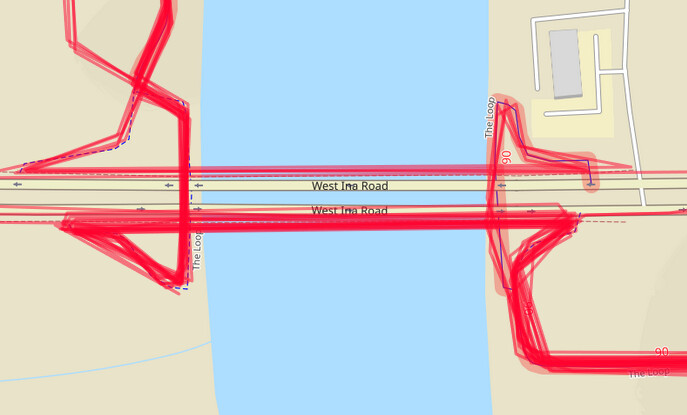I discover there are other gaps in 90 (e.g. East Irvington Road, Rillito River isn’t clear). It shouldn’t take a skilled route mapper more than minutes here-and-there to “heal” these. I can do it (next week?), others can, too. So, getting “the first one done” like this puts us on a roll.
A short version of (one thing that’s) going on here (in addition to infrastructure demolition and re-routing on new) is that so-called-locally “Loop” infrastructure (at regional, network=rcn level) is partially replacing existing USBR 90 (national, network=ncn) infrastructure. The two choices are to either “subsume” (sometimes a USBR will “absorb” a regional route) or to “co-exist as concurrent” where routing in both networks exists. In OSM we do concurrency by repeating membership of the underlying infrastructure way in both relations. Many renderers / routers are smart enough to “pay attention to both” (or more) where you might get “purple and red” routing (and numbering), for example (representing in OCM, both regional and national routing). It isn’t clear whether a regional route can “subsume” a national one, so OSM will wait to see what ADOT might say about the USBR, while OSM maps things as “the physical connectivity that must exist upon the ground.”
Postscript (April 29, 2023): Kerry says
“ADOT will update the USBR 90 route as they see fit. It…is in the hands of the DOT…to make these corrections.”
Meanwhile, OSM “sees fit” to “map what is on the ground,” especially as local cyclists ride it, even as there are no (USBR 90) signs directing cyclists to or on a particular route. If this means that existing routing is broken as previously-USBR-routed infrastructure is demolished, then OSM will (does now, actually) re-establish routing connectivity by using the newly-built “replacement” infrastructure, even if/as ADOT has not (yet) applied to AASHTO for this/these specific realignment(s).
Of course, if/as ADOT does make an application for realignment and AASHTO approves this, OSM will hew to the AASHTO-approved route (as we always have so far). Eyes remain wide open here, as “the ball is in ADOT’s court” while OSM is in both “listening mode” and “routes (90) as what is physically connected.” A few eraser crumbs to be blown away and sketched anew, is all. We’ve seen similar.
Final update (May 1, 2023): Elaine Mariolle (ADOT) with concurrence from Jenn Hamelman (ACA) say
“I think this has to do with the road construction that is taking place over the next couple of years. …We’re moving ahead on USBR 90 but it is slow… We haven’t forgotten - progress is just slow at our end.”
Again, really nice collaboration, everyone. “Many hands make light work!”
